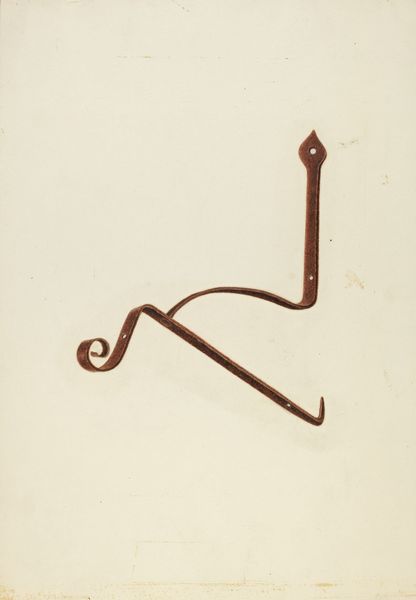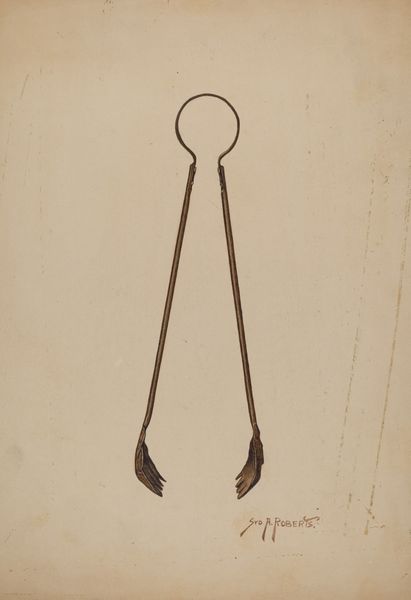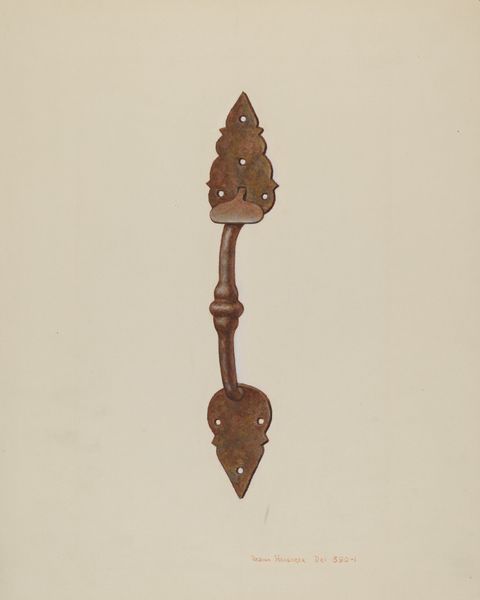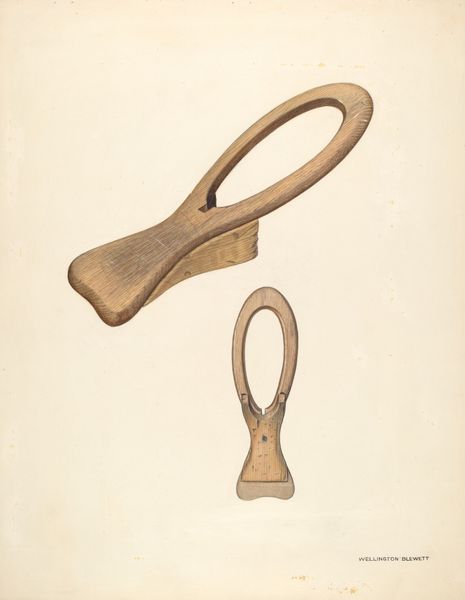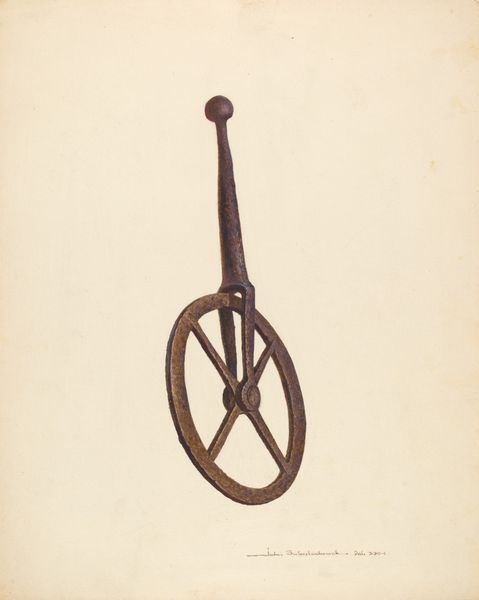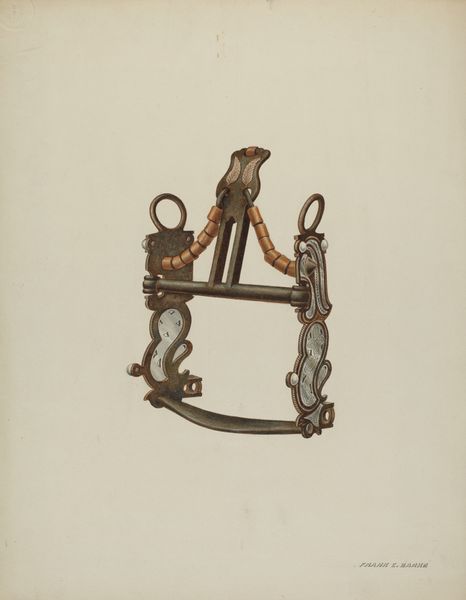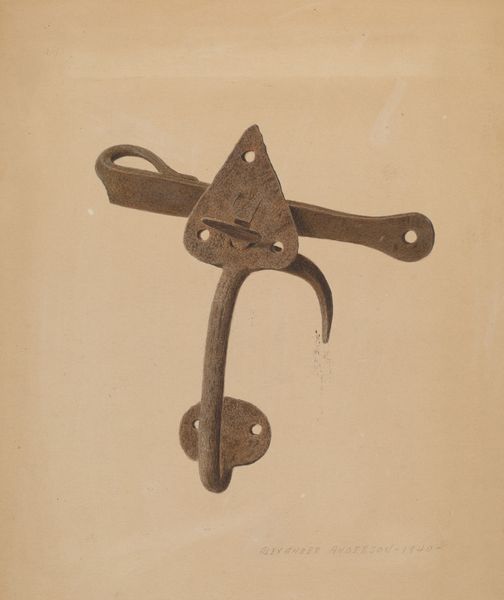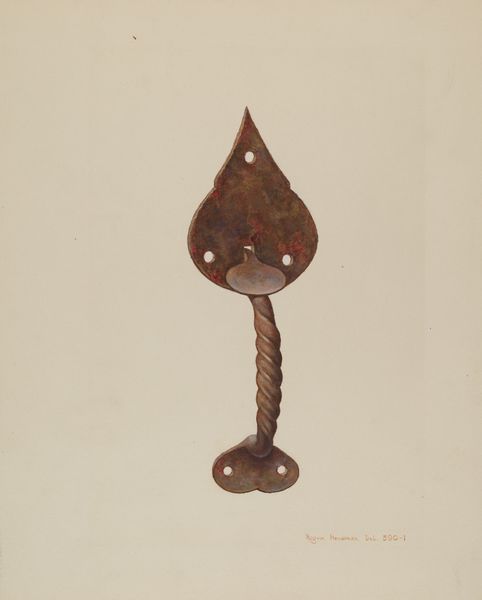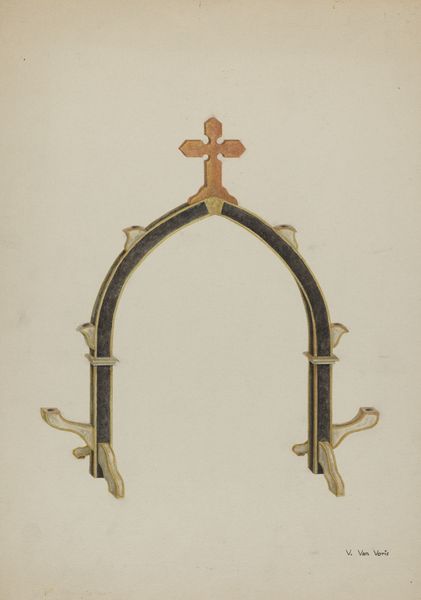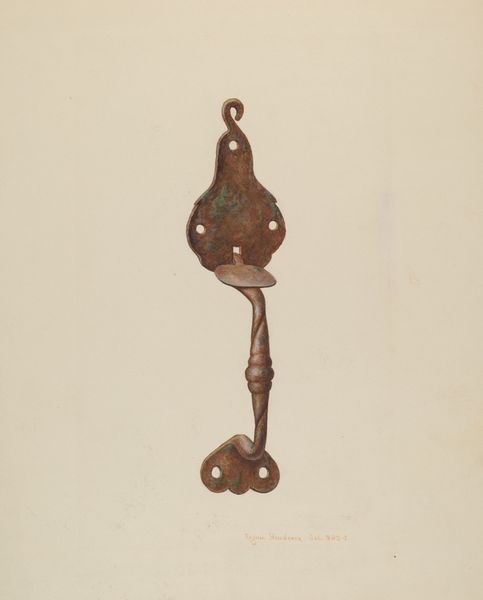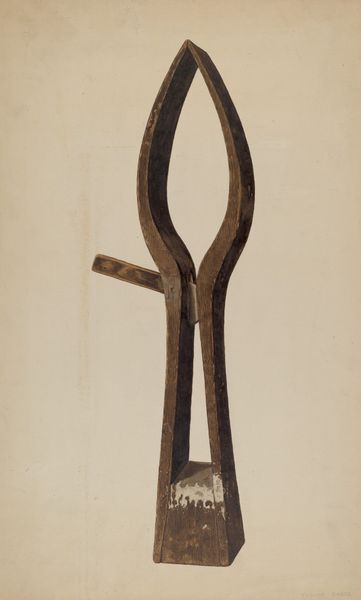
drawing
#
pencil drawn
#
drawing
#
toned paper
#
light pencil work
#
shading to add clarity
#
little shading
#
old engraving style
#
pencil drawing
#
letter design
#
limited contrast and shading
#
shading experimentation
Dimensions: overall: 33 x 25 cm (13 x 9 13/16 in.)
Copyright: National Gallery of Art: CC0 1.0
Curator: Here we have Fritz Boehmer's "Trivet," a drawing dating back to approximately 1939. What are your initial thoughts? Editor: Well, right away I notice how the rendering looks like an exercise in line work and tone—a study in bringing dimensionality to a very practical, everyday object. Curator: Indeed. Understanding the social context is crucial here. During this era, design and craft were deeply intertwined with social and political ideologies. Household objects, like this trivet, took on a new importance in representing national identity. The triangular form echoes modernist ideals. Editor: The piece definitely emphasizes function. You can clearly see how it would sit on a table and support a hot dish. The simplicity of the materials depicted – presumably iron or some other basic metal – speaks to the values of utility and accessibility over ornamentation. Curator: Precisely. Yet, that 'simplicity' masks the complexities inherent in the object's potential uses and symbolism. A trivet, in its essence, facilitates gathering and shared sustenance, but its design speaks to mid-century tensions around production. Note the very faint pencil lines, experimentation that feels almost tentative. Editor: It’s fascinating to think about the artist engaging with the physical making process, grappling with the representation of weight, texture, and form through something as fundamental as pencil on paper. You know, is that handling a reflection on the available materials during the era, given what was happening on a larger global scale? Curator: That connection is critical! We might see this artwork not simply as a rendering of an object, but as a symbolic engagement with domesticity, class, and perhaps an implicit resistance to dominant forms of industrialized production, all within a broader narrative about the relationship between artistic creation and everyday life. Editor: Viewing "Trivet" through the lens of materiality truly grounds the conversation around social function and intent, prompting us to reconsider the supposed divide between art and utilitarian objecthood. Curator: And for me, it prompts reflection on gender and domestic roles: Who would use such an item, in what kind of home, and how did representations of these scenarios uphold or subvert cultural norms of the time? Editor: Thank you. Thinking about material history opens up fresh questions, linking aesthetic choices to labor and access to resource. Curator: Agreed. There's always much to discover when we see artworks like this one in an intersectional manner.
Comments
No comments
Be the first to comment and join the conversation on the ultimate creative platform.
